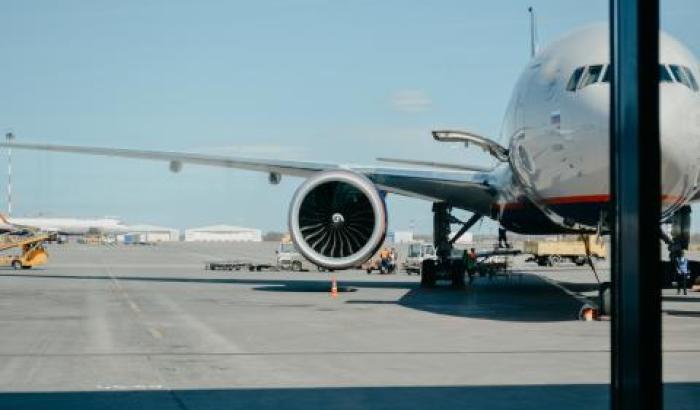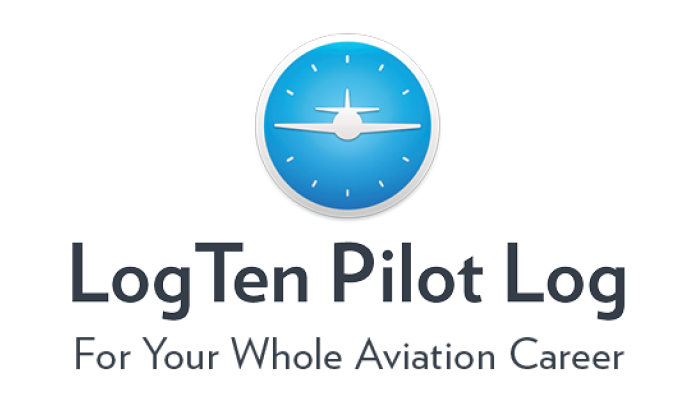
Attempting to untangle the conflicting messages for student pilots…
Anyone who has been following flight training and even the wider aviation industry will be aware of the various and sometimes conflicting opinions that are being published at the moment. I think it’s important to remember to take everything you read in the media with a pinch of salt, take a look at Donald Trump’s Twitter feed as an example, but is there really anything we can learn from what we are reading?
The here and now…
An essential starting point is to look at the facts of here and now, and it has to be said, they cannot be ignored. Industry experts are often heard to be saying Covid-19 has had more of an impact to aviation than 9/11, with statistics to back it up. Take Heathrow as an example. In their monthly traffic statistics report for April 2019 they recorded nearly 6.8 million passengers. That’s a number equivalent to the entire population of Ireland, plus another 2 million for good measure. Compare that to the figures recorded, admittedly at the peak of the lockdown restrictions for the United Kingdom, in April 2020 and you are faced with just 206,000 people. This is around 140,000 people less than attended the British Grand Prix in 2019 – to put it into perspective. That was April, but what about now?
Well, it took until July before Heathrow started to see passenger numbers that were more than single figure percentages of the previous year’s stats. The latest recorded figures for October were just 17.6% of the passenger numbers in 2019. So while it can be said there are signs of life in the statistics, calling it a “recovery” would be a bit optimistic as it stands. It is worth noting that if you ignore April and May, Heathrow’s cargo statistics never dropped below 65% of ‘normal’ figures.
Now Heathrow’s statistics do not paint the whole picture for Europe but do act as a reliable barometer. It cannot be overlooked, the situation right now is dire, and un-like anything that has ever been seen before. Therefore any predictions for the future must be treated with a large level of uncertainty – there really is nothing to compare this to.
The far left, and the far right…
I saw an interesting comment on a LinkedIn feed where someone compared the differing predictions of the future of aviation, to that of a political landscape. A ‘far left’ stance being that of “don’t even think about training as a pilot – try brain surgery instead”, to a ‘far right’ “there has never been a better time to become a pilot than during a global pandemic”. Whilst a little crude, it actually works. So let’s take a look at what has been suggested and where it falls relative to a ‘centerline’ – to put an aviation twist on it.
BALPA
Sitting the furthest left of the centerline is a press release from BALPA – the British Airline Pilots Association. For anyone unfamiliar with what BALPA do, they are one of the largest Unions for Pilots in the UK and also provide a free service for student pilots through their BALPA nextGen programme. Their message was clear, “everyone who is thinking about embarking on a pilot training course – think again”. Wendy Pursey, Head of Membership and Careers Services, later went onto say “In this situation it would be irresponsible if we did anything other than warn people to consider delaying their flight training at this time”. Given that a Union is defined as “organization that represents the people who work in a particular industry, protects their rights and may agree pay, working conditions, etc.” it is hardly surprising to see BALPA take this stance – they have to be seen to be protecting their paying members. Telling people “now is a good time to train”, while nearly 1,600 UK pilots alone are redundant, wouldn’t be taken lightly. For the full press release click here.
FTA, FTEJerez, Skyborne and VA Airline Training
In possibly the first of its kind, competing ATOs came together to release statements discussing the future of flight training. I would forgive you for thinking “Flight Schools telling people to go to flight school – hardly surprising”. Yet in actual fact the message appeared far closer to the ‘centerline’ than I expected.
For example, Oscar Sordo CEO at FTE Jerez, said that “we see no reason in delaying enrolment on a training course” because “bargaining on landing an airline job straight after obtaining a licence would always be unwise”. Throughout my training I was always told to expect 18 months between finishing training and joining an airline. An average course takes roughly 24 months so if you plan to have to wait 18 months after that you are looking at nearly 4 years – a lot can, and will, change in that time. Honesty from an ATO about the expectation of a job after completing training really cannot be overlooked.
Anthony Petteford, MD at VA Airline Training, also mentioned the long term considerations of flight training. “Airline pilot training typically has a two-year lead time, from initial research, to application, selection and the course itself, so students beginning training now will emerge at a much more advanced stage of COVID-19 recovery”. He also recognised the possible delay between training and the elusive first job and mentioned how “Our ATOs have launched several measures to protect the job prospects of both current trainees and graduates if they face a delay to airline placement”.
Lee Westwood, CEO at Skyborne, raised an interesting perspective by saying “Ceasing our ATO operations and pausing pilot training for the immediate future would not only lead to significant job losses among thousands of flight instructors, ground school instructors and support staff, it would be fundamentally damaging to the global aviation industry by ultimately creating a shortage of pilots”. He later mentioned “CAE recognising that 255,000 new pilots must enter training during the next decade to support growth and replacement”. We will look at CAEs predictions shortly.
The most optimistic message of the 4 came from Sean Jacob, the CEO for FTA Global, who opted for a more firm response to BALPA, calling their message “irresponsible”. He then went on to state that their “airline customers recognise the need to maintain their pilot pipeline and tell us they will seek to take on new pilots from as early as next year”. While there has been little evidence so far to suggest this, the likes of Wizz Air and Ryanair are still taking initial applications and expressions of interest for future first officer positons.
Is there really anything surprising that has been said? No, not especially, but the honesty from ATOs and direct recognition of the “significant” impact the pandemic has had on future job prospects is remarkably refreshing to hear. The overall message being one of, ‘don’t stop training – but do plan carefully and research all your options’. A message that is hard to disagree with.
CAE
CAE really poked the fire with their predictions of the future of aviation. Released around the same time as BALPAs press release CAE suggested over 42,000 new pilots would be needed in Europe during the next 10 years. Given the direct contrast to BALPAs message it was far from surprising to see the criticism it faced on social media. If you want to see the full article, including even more promising stats you can see them on their website. What is their reasoning?
Well, a mixture of “upward mandatory retirement and attrition rates” and a transfer to “other professions” for redundant pilots who “might not want to resume their pilot careers”. Whether or not this is the case will only become apparent of the coming months and years.
Where does this leave us?
The fact of the matter is that any predictions are exactly that, predictions - and this is just a handful of them at that. The aviation industry has never been in this situation before, and hopefully won’t return anytime soon. There is too much uncertainty still to offer any reliable expectations, will passengers want to fly again? What restrictions will there be on regarding those who are and aren’t vaccinated? Will we see the end of quarantine measures before they kill the Summer 2021 schedule? No matter how clear your crystal ball is, this recovery cannot be predicted.
But that does not mean you cannot be prepared, prepared for whatever might come. Now that vaccines are being developed, and crucially are showing effectiveness, a largescale breakout and second pandemic can be ruled out – at least for Covid-19. So there will be a return at some point to normal. Even in a world living with Covid-19 there will be travel, and where there is travel there are pilots. Airline recruitment in 2018 was almost monthly, many of my friends spending less than 2 months between graduating and starting line flying. Even if a return to those passenger numbers takes years, it doesn’t rule out starting training now. You just need a training plan that allows you to control the speed and price of your training plan – up steps modular. In my opinion the future of flight training is going to look something a little like this:
Initially there will be high levels of competition for jobs – in some cases with low hour pilots applying for the same jobs as experienced redundant pilots.
There is no rush to finish training – modular training spread over the next few years would be a wise decision.
Expect at least 2 years after training before a job – If you plan to budget financially for at least 2 years of renewals and currency then if you need it, it’s there.
Have a Plan B, C and D – Do not put all your eggs in one basket, consider back-up employment alongside your training where possible, maybe consider a university degree prior to commencing training. Certainly do not throw away a job in favour of focussing on flight training.
If you are already training, slow down if you can – if on a modular course, take your time, find the right schools for each modules and try to earn as much money at the same time as training. If you are integrated you are tied in, but as above, expect a delay between graduation and starting a job so think about alternative work.
This is a testing time for everyone in aviation. If you fail to prepare, prepare to fail. Research and planning are the keys to navigating your way through the next few years. If you need any help feel free to contact us.
WM










